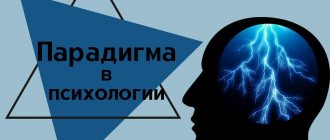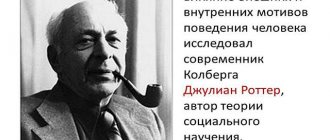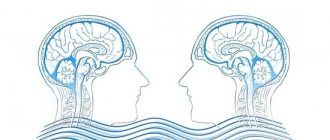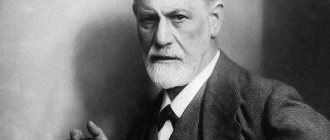Nowadays all kinds of aphorisms about the meaning of life are in fashion. Here are some of the most popular:
“The more perfect a person is on the outside, the more demons he has inside.” “The only person you should compare yourself to is your past self. And the only person you should be better than is you now.” “A person never gives up anything, he simply replaces one pleasure with another.”
But, putting these beautiful phrases in statuses, publishing them on social networks, quoting them in companies, most people do not even realize that they belong to the famous psychologist of the first half of the 20th century, Sigmund Freud, and reflect the whole essence of his teaching, known as psychoanalysis.
What is psychoanalysis: the essence of the theory
Let's define the concept. The name is derived from two Greek words: “soul” and “decomposition, dismemberment.” The concept entered the scientific community in 1896 after the publication of a German article on the origin of neuroses. It is no longer possible to say exactly who first introduced the concept of psychoanalysis, but Sigmund Freud is considered its founder. It was he who invented psychoanalysis and proposed it as a branch of psychology.
The Laplanche and Pontalis dictionary gives the following definition of psychoanalysis: “This is a research method based on identifying the unconscious meanings of words, actions, products of human imagination (dreams, fantasies, delusions); a method for treating neurotic disorders based on this research; a set of theories of psychology and psychopathology that systematizes data obtained by the psychoanalytic method of research and treatment.”
Thus, psychoanalysis in simple words is a scientific theory and method of treating mental disorders. It is currently being considered in three areas:
- as a psychological and philosophical theory of personality;
- as a set of principles and methods for studying the unconscious of the individual;
- as a direction in psychotherapy that helps get rid of intrapersonal conflicts, neuroses, complexes, psychoses, depression, phobias and other problems.
Psychoanalysis in psychology is considered both theory and practice. Let's look at the essence of S. Freud's theory of psychoanalysis.
What does psychoanalysis study? Unconscious motives and desires of the individual. If we talk about psychoanalysis as a theory, then its essence can be reflected in several theses (features):
- the conflict between the conscious and unconscious leads to the development of neuroses, fears, depression and other psychological problems;
- thoughts and behavior are determined by unconscious desires;
- awareness of true motives, needs, desires is difficult due to the inclusion of protective mechanisms of the psyche;
- psychological problems can be solved if they are brought to the level of consciousness (this can be done using psychoanalytic methods).
The basic idea of Freud's psychoanalysis is that there can be no inconsistency or interruption in human mental nature. That is, everything that a person has in the present is the result of the past. If something doesn’t suit you now, then you need to look for the reason in the past. And now we will analyze everything in more detail and in order.
What did Freud think about the existence of taboos in society?
In subsequent works, Freud continued to develop the social aspects of his theory, moving from the family to the theme of society. In the book “Psychology of the Masses” he raises questions about the mechanisms of mutual infection in the crowd.
From Freud's point of view, the crowd cannot have reason, it does not weigh the pros and cons, and is also capable of colossal achievements and equally colossal destruction. An individual person in a crowd loses the ability for critical thinking and becomes just a dependent cell of an entire organism, which is many times stronger and more unreasonable than each person. In a crowd, a person seems to lose his head and also becomes much stronger and much more unreasonable than his usual self.
In this part, Freud repeated the ideas formulated by Gustave Le Bon in his book The Psychology of Crowds. However, Freud saw his task as going further and describing the state of a person in a crowd from the point of view of psychoanalysis and the theory of the “Super-Ego” - the authority of conscience, formed as a result of the internalization of the image of the father.
In a normal state, a person lives under the burden of conscience and suffers from it. At the same time, it is conscience that gives a person the opportunity to stop and think before acting; It is the ability to weigh the pros and cons that gives a person the opportunity to act freely and autonomously.
In the crowd, a person refuses the internalized “Super-Ego” - he, as it were, returns to the state of a child and delegates his “Super-Ego” to the one who in the crowd takes on the role of “father” (leader, commander, leader).
Freud, being an extreme anti-clerical, tried to bring the church under this theory, but encountered difficulties of a theoretical nature; after all, the church is not an enthusiastic crowd. Nevertheless, Freud saw in the church the beginning of mass development and said that the priest or the figure of God takes on the form of the “Super-Ego” in it.
Who is the founder of psychoanalysis
The author of the theory and founder of the method of psychoanalysis is the Austrian psychologist, psychoanalyst, psychiatrist and neurologist Sigmund Freud. He was also the founder of the school of psychoanalysis. Sometimes the theoretical basis of psychoanalysis (Freud's philosophy) is called Freudianism. Freud's theory had a significant influence on psychology, medicine, sociology, anthropology, literature and art of the 20th century.
Interesting! Freud's closest followers were K. Jung, K. Horney, A. Adler, E. Fromm and others. Some of the modern psychologists also rely on Freud's teachings.
From the history
Freud
The founder of psychoanalysis is Sigmund Freud (1856-1939), a famous Austrian psychologist, psychiatrist and neurologist. Practicing in different hospitals, he gradually accumulated experience in order to later formalize it into one clear and well-founded theory.
- For a long time he worked with patients suffering from neurotic and hysterical character traits.
- Then he consulted aphasic children (with speech impairments). He revealed that their problems are not caused by physiology, but by mental reactions.
- He completed an internship with the famous neurologist J.-M. Charcot, studying general paresis.
As a result of his extensive and varied practice, in 1895 he wrote the book “Studies in Hysteria.” This is the first theoretical basis of psychoanalysis. It is in it that the idea is formulated that the causes of most mental disorders are suppressed, hidden in the unconscious memories of traumatic situations from childhood. Here Freud suggested that they are all somehow connected with sexual desires.
In 1900, his second major work, “The Interpretation of Dreams,” was published. It describes the meaning of dreams for the human psyche. In his opinion, it is they who reveal the essence of the unconscious, which manifests itself in the form of symbols. They just need to be decrypted. The same book presents a detailed “topographic model of the psyche,” its structure and operating principle. According to her, social prohibitions and educational frameworks displace indecent sexual desires into the realm of the unconscious. This process almost always ends with a feeling of increased anxiety and the development of mental disorders.
Sigmund Freud (1856-1939)
Freud's psychoanalysis (Freudianism) subsequently constantly developed, expanded and was critically rethought. On its basis, new schools, trends and branches from classical theory appeared. Most often they were led by former colleagues and students of Freud. For example, A. Adler and K. G. Jung. Although on many issues they sharply disagreed with their teacher.
Jung
Many experts note that Jung's psychoanalysis is a direction radically different from Freudianism. Carl Gustav Jung (1875-1961) was a Swiss psychiatrist and teacher who developed the doctrine of archetypes. These are structural elements of the collective unconscious (there are archetypes of the baby, maiden, mother, rebirth, spirit, trickster, etc.). With their help, you can interpret not only dreams, but also myths of different nations. The goal of Jung's direction (as defined by the psychoanalyst himself) is the individuation of the individual. This is a process of mental development when individual abilities (talents) and unique characteristics of a person are fully realized.
Jung's concept of psychological types has gained particular popularity. The classification is based on psychological attitude (extroverted or introverted) and mental functions (thinking, feelings, sensations, intuition).
Neo-Freudianism
The second, later wave of the emergence of new psychoanalytic movements is neo-Freudianism. The most prominent representatives are E. Fromm, K. Horney, G. S. Sullivan, J. Lacan and others. They tried to find common points of contact between psychoanalysis and the social and human sciences.
Erich Fromm (1900-1980) - German sociologist, social psychologist, philosopher, representative of the Frankfurt School. He is the founder of neo-Freudianism and Freudo-Marxism. Linked Freud's psychoanalysis with Marxism and ethics.
Karen Horney (1885-1952) was an American psychologist and a key figure in neo-Freudianism. Shifted the emphasis from sexual desires as the main motivators of human behavior to the impact of the surrounding social environment. She outlined her views and ideas in the book “New Paths in Psychoanalysis.”
In Russia
In Russia, this trend became incredibly popular in the 1920s. Ivan Dmitrievich Ermakov (1875-1942) was a Russian psychiatrist and psychologist, who was also an artist and literary critic. Considered a pioneer of Freudianism in the USSR. He founded the State Psychoanalytic Institute and translated the works of Freud and Jung into Russian. Since the 1930s. psychoanalysis was persecuted and forgotten until the 1990s.
Modern psychoanalysis has more than 20 schools and movements. Their theories and approaches to treating disorders differ so radically that it is extremely difficult to find one source for them.
Basics of psychoanalysis
The unconscious, sexual instinct, sublimation, Freudian slip - you may have heard these concepts. All of them relate to psychoanalysis. Do you know their definitions and essence? Now let’s figure it all out, consider the basics of personality psychoanalysis, and analyze the key concepts.
Consciousness and unconsciousness
In the theory of psychoanalysis, Freud identified 2 structures of the psyche. Each of them has three layers, but these structures are somewhat different from each other. First, let's look at the layers of the first structure:
- Unconscious. All secret desires, repressed memories, animal instincts, immoral desires are stored here.
- Preconscious, or subconscious. At this level is located what a person knows and remembers at the present time or, if desired, can remember.
- Consciousness. These are thoughts, feelings, emotions, plans of a person in the present.
This is the primary structure of the psyche according to Freud. Later, the psychoanalyst discovered the method of free associations and developed a new structure (concept) of the structure of the psyche. In it he identified three elements: It, I and Super-ego.
"It", "I" and "Super-ego"
According to the theory of psychoanalysis, our psyche has three levels:
- Id (It), or lower level. This is the level of instincts, drives - everything that remains in us from animals. This is also the level at which all repressed desires, memories, and needs are stored. Simply put, this is the level of the unconscious (popularly it is often called the subconscious, but now you know the difference). What happens at this level is beyond our control. It reminds itself of itself through emotions and feelings, mental states, dreams, slips of the tongue and typos, bodily symptoms, etc.
- Ego (I), or middle level. This is the field of our awareness. Experience, knowledge, skills, beliefs and everything that we have accumulated in the process of socialization have gathered here. We control and understand everything that is here, we can control our thoughts and behavior.
- Super-Ego (Super-I), or highest level. This is our inner moralist, critic and censor - conscience, if you like. At this level all our ideas about “what is good and what is bad” and how we should behave in society are located.
Often the id and the superego come into conflict, and the ego tries to reconcile them. In fact, every person spends most of his life in such a search for a balance between animal instincts and the highest moral values, prohibitions, and norms. Not everyone manages to maintain balance; sometimes we are tossed in one direction (we give in to desires, emotions), then in the other (we rationalize life too much, block our feelings and suppress desires). Both are dangerous. If falling to one side occurs too often, a person develops complexes, neuroses and other psychological problems.
Important! Suppressed desires lead to the development of complexes. Sublimation helps get rid of frustration (experience due to the inability to satisfy a need).
Defense Mechanisms
According to Freud, any psychological problems are associated with the conflict between the animal and the social in man. That is, when a person suppresses desires that are shameful by social standards, he gets sick, becomes aggressive, apathetic, and irritable. This can be avoided if you redirect the animal impulse into a productive direction: creativity, sports, career building, social activity. This is called sublimation - the transfer of sexual energy to another activity. Sublimation is one of the protective mechanisms of the psyche named by Freud.
In addition to sublimation, the psychoanalyst identified 7 more defense mechanisms (later other psychologists expanded this classification):
- Crowding out. If a person does not understand how to satisfy his desires in a socially acceptable way, but cannot forget about it, then he represses them to the level of the unconscious. And he seems to forget (he really doesn’t remember). However, this does not mean that the impulses have disappeared. They continue to influence a person's thoughts and behavior. A lot of energy is spent on restraining desires, which is why a person soon falls ill.
- Negation. The person convinces himself that it seemed to him that it happened by accident, that he misheard, etc. In general, he tries his best to convince himself that something unpleasant did not happen or that it did not happen to him.
- Rationalization. A person convinces himself that he could not have acted differently. Yes, he committed a shameful act, but it was necessary. In most cases, the explanation actually looks logical, but it has nothing to do with the true motives.
- Projection. A person blames others for what he does not accept in himself. For example, a cheater accuses his partner of cheating, a traitor suspects his friend, etc.
- Substitution. When a person cannot take out his anger on one object, he takes out his aggression on another. For example, a child who is beaten by his parents beats younger children and abuses animals. A man who cannot hit his boss takes it out on his children and wife at home. By the way, replacement concerns not only aggression. Any emotion and feeling can take part in this. For example, a young man likes one girl, but he cannot be with her, so he meets with a more accessible one, imagining that passion (and sometimes trying to make the second girl the first).
- Inversion. This is an attempt to evoke exactly the opposite feelings towards an object. For example, in order to survive a painful breakup, a girl begins to concentrate on the man’s real and imagined shortcomings. The goal is to make the object disgusting, not so attractive. Then the desire and attraction to him will disappear.
- Regression. This is a return to the previous stage of development, that is, the inclusion of children's behavior patterns. You may have thought that we are talking about hysterics, screaming, crying, insults, demonstrative care, etc. Yes, but not only. Alcoholism, gambling, drug addiction, eating problems, smoking - this is also a form of regression. Adults do not escape reality - they solve problems.
The protective mechanism of the psyche is a set of unconscious reactions that protect a person from negative emotions and experiences. Defense mechanisms help maintain mental balance. However, you cannot rely only on these forces all the time. Frequent use of defense mechanisms leads to personality deformation and hinders socialization. And also, defense mechanisms sometimes fail, which also does not benefit the individual.
Psychosexual development
According to Freud, every person goes through 5 stages of psychosexual development, each of which has its own leading need:
- Oral (0 – 1.5 years). At this stage, the baby needs close communication with the mother through breastfeeding. The mouth area is associated for a child with safety, care, and tenderness.
- Anal (1.5 – 3 years). The need for independence prevails. This is potty training period. Going to the toilet independently is a child’s first conscious and serious action. He likes to feel that he is in control of himself and the situation. At the anal stage, the rudiments of self-control and self-regulation are formed.
- Phallic (3 – 6 years). This is the stage of passing through the Oedipus complex (for girls - the Electra complex). According to Freud's theory, sexual energy is inherent in a person from birth. At the age of 3-6, children develop an interest in the parent of the opposite sex. The child tries with all his might to get his attention, love, care. Aggression and jealousy awaken towards a parent of the same sex as the child. Gradually, the offspring realizes that he is losing the “war”; the attraction goes to the subconscious level. In the future, it will transform into a search for a partner who is similar to a parent.
- Latent (6 – 12 years). At this stage, the libido is dormant. The child needs social activity. It is important to encourage meeting with friends, participating in hobby groups, etc. Freud called reorientation toward social activity sublimation. And it is at this stage, as Freud believed, that the Ego and Superego appear.
- Genital (puberty and up to 22 years). Sexual energy awakens, now it is directed towards the teenager’s peers. At first, interest in people of the same sex arises (this takes the form of friendship), and later the young man’s attention switches to people of the opposite sex. In adulthood, this results in the building of love relationships and family.
For example, getting stuck at the anal stage of development leads to the formation of an anal character. Such a person is characterized by stinginess, greed, stubbornness, pedantry, a tendency to aggression and self-destruction, impulsiveness, and conflict.
Note! Getting stuck at stages of development occurs due to insufficient or excessive satisfaction of the leading needs of this period. That is, the child was either not given something and for the rest of his life he tries to get what he wants, to compensate for the previous deficit, or he was “strangled” with something and in adult life he defends himself with all his might, defends personal boundaries, avoids what reminds him of the problem period from childhood.
Complexes
The concept of “complex” appeared in later versions of the theory of psychoanalysis and is associated with the name of Freud’s follower – A. Adler. A complex is a set of experiences that arise against the background of a contradiction between personal and social, “I want” and “should.”
They often talk about an inferiority complex - this is a combination of a person’s experiences due to the subjective perception of his own failure. Simply put, a person considers himself worse than others, less worthy. He sees the happiness and success of those around him, wants to feel the same, but cannot and does not know how to achieve this.
In fact, human psychoanalysis examines much more complexes. Here are just a few of the popular ones:
- overcompensation complex - attempts to hide an inferiority complex through a demonstration of strength and aggression;
- Phaedra complex - painful overprotection of a mother in relation to her son;
- Polycrates complex – fear due to rapid development in life, anxiety against the backdrop of success;
- Jonah complex – self-doubt and a feeling of unworthiness, denial of personal achievements and victories;
- excellent student complex - a craving for perfectionism, the desire to be a “good girl” or “good boy” in everything;
- impostor complex - a person thinks that he is taking someone else’s place, that he accidentally received all the benefits that he has.
How are libido, the Oedipus complex and castration fear related?
Beginning with “Three Essays on the Theory of Sexuality” (1905), Freud moves on to interpret the unconscious as repressed libido. In the same work, he introduces the concept of infantile sexuality - the assertion that something like sexuality is characteristic of a person not only after puberty, but from birth (by the way, this idea was met with hostility by the medical community).
Might be interesting:
Anarchism + psychoanalysis = erotic revolution. Who did the representatives of German bohemia love and how?
Infantile sexuality, of course, is not similar to adult sexuality and is associated with the relationship between mother and infant. The first - oral - stage of libido development is experienced during the period when the baby suckles the breast and wants to have undivided possession of the mother. Then the child learns to regulate body functions and control his bowel movements (anal stage) - during this period the foundations of independence and stubbornness are laid. The third stage of sexual development is genital, which occurs during adolescence. Several years pass between the anal and genital stages of sexual development - during this time the child’s interest is transferred from his own body to the world around him.
Freud introduced the concept of the Oedipus complex later, but in fact already in “Three Essays” he completely prepared the ground for this idea, since the relationship between mother and child is also key to it.
The mother is always the first object to which the child feels attraction.
The child’s perception of it changes: at first it is only the mother’s breast, but over time a holistic image is formed.
Freud paints a very convincing diagram of a boy's growing up. As a child, he feels attracted to his mother and wants his mother to be with him all the time, to belong only to him. But at the age of one or two years, the boy begins to feel jealous of his father, who claims his rights to his mother.
Around this age, a boy discovers that women do not have penises. This discovery horrifies him: if someone doesn't have a penis, it means they can lose it too. The fear of castration is combined with jealousy of the father and attraction to the mother - and turns into fear of the father.
According to Freud's theory, in the normal development of a child, the Oedipus complex should move into the identification stage, where the child as a whole continues to want the same thing (to marry his mother), but now expresses it as a desire to grow up and become like his father.
By the way, Freud believed that during psychoanalysis the patient experiences towards the doctor the whole range of feelings that he experienced towards his father in childhood - this could be both love and hostility. Having met a psychoanalyst, a person seems to remember and experience feelings from childhood. Freud called this phenomenon transference. The psychoanalyst, in response to the transference, develops counter-feelings towards the patient - this phenomenon is known as countertransference. As a result, the patient and the psychoanalyst become not indifferent to each other.
Methods of psychoanalysis
As we have already found out, psychoanalysis is not only a theory, but also a practice. With its help, you can diagnose and correct your mental state. Psychoanalysis includes many techniques for working with the unconscious, but all of them can be divided into three groups.
Methods of psychoanalysis:
- Interpretation. The point is to analyze and comprehend minor elements: slips of the tongue, random phrases, errors in speech, etc. The psychoanalyst and the client talk about the person’s past, present and visible future, and during this the specialist identifies hidden problems and fears. That is, he interprets the client’s words and helps to “translate” them. Interpretation does not act as an independent method, but as an auxiliary one. For example, it is used in combination with two other popular methods of psychoanalysis: the method of free association and the method of dream interpretation.
- Free associations. The psychoanalyst calls the client words, phrases or shows pictures and invites him to respond with the first thing that comes to mind. Auxiliary materials are prepared in advance. They can be developed by the psychologist himself for a specific case. Or the specialist uses well-known techniques, for example, the Rorschach drawing test (ink spots on paper). It was Freud, with his psychoanalysis and the method of free association, who created the image of a patient lying on a couch and a psychologist listening to the client. In life, such communication is rare, but then Freud interacted with clients this way. He invited the person to lie down on the couch, relax and start saying whatever came to mind. Strange, obscene, fantastic, shameful - it doesn’t matter. There are no taboos in the psychoanalyst’s office, and the specialist adheres to the principle of a non-judgmental attitude. Sooner or later, in the process of such a free flight of associations, a person independently came to the main conflict.
- Analysis of dreams. Nowhere does the unconscious manifest itself more actively than in dreams. Particular attention should be paid to recurring dreams or dreams after which a person wakes up “broken.” According to Freud, the stranger the dream, the more meaning it makes. The fact is that in dreams any prohibitions and censorship disappear, defense mechanisms are turned off, everything that has accumulated there comes out of the unconscious. However, not all so simple. True experiences, desires, needs in dreams are shown by symbols. And these are the symbols that the consciousness of a particular person will accept. That is, a certain “filter” is preserved even in the realm of the unconscious – sleep. To immerse yourself in the art of reading dreams, study S. Freud's book “The Interpretation of Dreams.”
Using these methods, you can look into a person’s unconscious, identify repressed desires, emotions and memories, understand the motives of actions and correct behavior.
Important! Do not confuse psychoanalysis with psychotherapy. The psychoanalyst is largely responsible for ensuring that the person speaks freely and finds the origins of the problems themselves, as well as their solution. The psychoanalyst guides, but does not give direct instructions and advice.
How did Freud explain the prohibition on incest and what kind of relationship did he have with his mother?
In his later works, Freud turned to the analysis of society and culture - he wrote about them in the books “Totem and Taboo” (1913), “Mass Psychology and Analysis of the Human Self” (1921), “Discontent with Culture” (1930).
The book “Totem and Taboo” can be classified as “psychoanalytic fiction,” for which Freud was rightly criticized. The work contains some very outlandish ideas that are easy to question, such as the suggestion that the common human feeling of parental guilt in many cultures stems from the fact that in primitive times a group of brothers allegedly ritually murdered their father. Freud also connects the persistence of certain taboos in culture with this.
However, the main theme of this book is avoiding incest. Freud interprets the traditions of exogamy from this position, adding to his usual theme of incest of children and parents also the theme of avoiding incest between a man and his mother-in-law.
The libido-based relationship between parents and children is not such an extravagant Freudian fantasy as it may seem to people far from psychoanalysis.
Unfortunately, the transfer of mother's libido to the child is a fairly common occurrence. Let's give an example. When a person is in love, it seems to him that the object of his love is better than everyone else, and the object is described in superlatives. When a young man falls in love with a girl, it seems to him that she is the most beautiful of all, the most wonderful of all - this is natural, since the object of libido is the girl. As for the girl, she often treats her chosen one calmly and can see his shortcomings. But when a girl looks at her child, it seems to her that he is the best, most beautiful and smartest - she overestimates not her partner, but her child. The girl relates objectively to her partner, but subjectively to the child, so that the object of her libido is the child.
Later, Lacan discussed this feature of the relationship between mother and child, talking about how important it is for the father to intervene in this relationship. Modern psychotherapy also adheres to the idea that a too close relationship with the mother is undesirable. And since the classical two-parent family form is in crisis, psychotherapists will sooner or later have to develop teachings on how best to raise fatherless children while preventing libidinal transferences from the mothers.
By the way, it is known that Freud’s mother treated him with delight, which played a big role in the early development of his character. His character developed strong. But if Freud had been weaker by nature, his mother could have subjugated him.
Concept
We have already said a lot about Freud’s theory, but all of this is somehow generalized, mixed up (new and old). What is the concept of Freud's original theory of psychoanalysis? Let us outline the main provisions (features) of psychoanalysis:
- All psychological problems of the individual are caused by the conflict between the conscious and unconscious.
- Physiological needs suppress the needs of higher levels. As Freud said, “at the basis of all our actions are the desire to become great and the sexual desire.”
- Every incident in a person's life has its consequences.
- Every action has an obvious or hidden motive, which is associated with a person’s previous experience.
- The individual development of a subject is determined by the structure of the personality, childhood and youth experience.
- The psyche is a complex mechanism consisting of three levels: It, I, Super-ego. It is important to study all this in a comprehensive manner and look for the causes of psychological problems in the present at the level of the It (unconscious).
In the theory of psychoanalysis, the subject of study is unconscious motives leading to mental disorders.
Now let's move on to an analysis of the types of psychoanalysis.
What is the pleasure principle and the reality principle, and what does fantasy have to do with it?
According to the pleasure principle, every desire should be satisfied immediately. Fantasy serves to comply with this principle. From Freud's point of view, fantasy is an unconscious mechanism that is triggered by drive. Under no circumstances should one assume that a person decides what to fantasize about. Fantasy, like drives, is a physiologically conditioned and compulsory thing.
The principle of reality is associated with the fact that over time the child realizes the opportunity to satisfy desires not only fantasy, but also in reality. However, to do this, he needs to overcome certain difficulties, which means sacrificing the immediate satisfaction of desire. This is how the child gradually learns to act in reality.
In adults, the reality principle replaces the pleasure principle. As a consequence, the pleasure principle withdraws into fantasies, the drives stimulate fantasy ways of satisfying them, and the conscious “I,” fully imbued with the reality principle, uses fantasies as material for choosing goals.
Example: let's say a person is hungry. This need arises at the physiological level, but then the imagination begins to sort out possible ways to satisfy hunger: go to an expensive restaurant, to a simple cafe, to a buffet, to home, to cook soup, to make a sandwich.
From the point of view of fantasy, Freud emphasizes, all options are equivalent, because it has no idea of obstacles. Taking into account obstacles is a matter of the reality principle. The reality principle should weed out those options that seem unacceptable (for example, going to an expensive restaurant or making a unhealthy sandwich). Already at the conscious level, the “I” may hesitate for some time between several acceptable options, but then it makes a decision and transfers it to the level of an action program.
What directions (types) of psychoanalysis exist today?
In modern theories of psychoanalysis, the emphasis has shifted from sexuality. Psychologists consider not only this need as the cause of all troubles, but also other unmet needs.
For example, people with a heightened and unsatisfied need for power often become tyrants at home or at work. People who lack warm social contact surround themselves with animals. People who cannot or are afraid to have children, but want it, also direct their energy towards animals, for example, cats. Women who cannot succeed as professionals find themselves in raising children.
Classical Freudian psychoanalysis is one of the types of this teaching known to psychology. There are other schools (directions) of psychoanalysis. Let's briefly highlight them:
- Ego psychology. If Freud paid more attention to the Id, then here all attention is focused on the Ego (I), that is, the conscious part of the personality.
- Object Relations Theory. This theory is based on the proposition that the psyche is a system of internal objects that are a reflection of people and situations from the outside world. The specifics of relationships with people in the present and the life scenario are determined by the childhood experience of the subject. That is, in adulthood a person reproduces what he was used to in childhood.
- M. Klein School. The psychoanalyst paid more attention to child psychoanalysis, in particular to the analysis of the Oedipus complex. She considered love and aggression as the main driving forces of the psyche. The first one heals, the second one splits the psyche.
- Structural psychoanalysis by J. Lacan. The psychoanalyst viewed a person strictly as a subject and proposed solving psychological problems through speech. He considered the basis of personality to be a tandem of three elements: imaginary (a person’s idea of himself based on knowledge of other people), symbolic (search for differences in himself and others), real (situation, place where the individual first met another). The psychoanalyst depicted this as a symbol of three connected rings. If even one ring is opened, the mental balance of the individual will be disrupted.
- Interpersonal psychoanalysis (G.S. Sullivan, Clara Thompson). Attention is focused not on the analysis of personality, but on the analysis of interpersonal relationships. It was this element that psychoanalysts considered the most important and significant in the mental development of the subject.
There are other modern areas of psychoanalysis, but these are the most in demand.
What are projection and rationalization?
The concepts of projection and rationalization are also associated with epistemology and the theory of knowledge. Both projection and rationalization indicate that we often see reasons for our feelings and actions that have nothing to do with the real reasons.
In near-psychoanalytic speech, projection refers to the tendency of people to attribute to others qualities that they themselves have. But Freud understood projection more broadly and deeply. From his point of view, projection is close to the concept of load - this is a person’s tendency to see the causes of his feelings in external objects, while we ourselves load the objects with our own relationships.
For example, a person woke up for some reason in a bad mood, and it seems to him that his wife, child, or dog are to blame. And the next day he wakes up and everything is fine with him - and now he has a beloved wife, a smart child, and a wonderful dog.
Another example: we feel hostility towards a person for unconscious reasons unknown to us, but since we feel the need to somehow explain to ourselves the feeling that has arisen, it begins to seem to us that this person himself is hostile to us, and we are only responding to him. This is how we unconsciously place the reasons for our feelings in the world around us. (By the way, projection is an effective tool for understanding delusions in paranoid schizophrenia. This is a case where the primary disturbance appears to be pathological affect, an acute experience of fear or wariness, probably due to biochemical disturbances in the brain. However a person must somehow explain to himself his condition: if there is fear, then something dangerous is happening. This is how the delusion of persecution is born.)
Rationalization is a person's tendency to explain his actions by internal motivation rather than by external reasons.
Suppose a person under hypnosis was given a delayed suggestion, saying: “Five minutes after you wake up, you will jump and clap your hands.” The man wakes up and five minutes later jumps up, claps his hands and exclaims something like: “I remembered where I put the keys!” The person jumped because of a suggestion, but does not know about it and therefore feels the need to explain his action to himself (the person comes up with the reason, of course, unconsciously).
How psychoanalysis influenced the development of psychology
Freud's theory of psychoanalysis contributed to the development of psychology. Psychoanalysis made a real revolution in the world of psychotherapy and psychiatry. This theory was reflected in the works of other psychologists (representatives of psychoanalysis): A. Freud, D. Winnicott, H. Hartmann, M. Mahler, E. Glover, E. Erikson, M. Klein and others. Direct followers of Freud are Carl Jung, Alfred Adler, Otto Rank, H. Hartman, E. Chris, Anna Freud (daughter of the famous psychoanalyst).
What is the significance of psychoanalysis for fundamental and practical psychology? After Freud's discoveries, researchers began to pay more attention to the topic of defense mechanisms of the psyche, stages of mental development of the individual, levels of consciousness, and psychosomatic disorders. Dreams received special attention. Before the publication of the book “The Interpretation of Dreams” by S. Freud, they were not given such importance.
Interesting! Freud's teachings even influenced cinema. Alfred Hitchcock, Federico Fellini, Michelangelo Antonioni, Paolo Pasolini were inspired by his works.
Definition
Psychoanalysis is the teaching of a famous psychotherapist, which speaks of the following basic principles:
- conscious and unconscious conflicts lead to neurotic states, fears, depressive states and other mental disorders;
- experience with knowledge, human behavior is formed on an irrational drive;
- the individual who wants to become aware of the drive includes a defense theory that interferes with awareness;
- the influence of the unconscious is neutralized through its psychoanalysis, therapy, which involves solving the problem.
The key idea of psychoanalysis comes down to the statement that a person is not aware of his own motive for behavior, he needs interpretation. As part of classical psychoanalysis, Freud recommends that the patient voice thoughts with associations and dreams. The task of a psychoanalyst is to analyze what he hears.
Criticism
Freud's theory immediately attracted public attention. But it cannot be said that it was exclusively positive - there were many critics. And until now, Freud's teachings are subject to critical analysis. Here's what he's criticized for:
- too much emphasis on human sexuality;
- a strange attitude towards childhood sexuality (some researchers find the idea of the Oedipus complex wild);
- there is a possibility that the client’s condition will worsen during psychoanalysis (based on a 1994 study that proved that behavioral therapy is more effective than psychoanalysis);
- it is difficult to test the theory experimentally, since too much attention is paid to the human unconscious;
- there is too much subjectiveness in theory and psychoanalysis as an applied method of psychotherapy;
- Freud’s painful desire to look for mental pathology in everything (there are cases when Freud mistook the somatic problems of patients for mental disorders, for example, he diagnosed a patient with toothache as “Hysterical neurosis”).
Some psychologists still consider Sigmund Freud's psychoanalysis a pseudoscience. They doubt its validity, reliability and effectiveness.
Interesting! Freud's theory causes admiration or indignation, but it does not leave anyone indifferent.
Why did Freud need Thanatos and how does it explain the death drive?
In his next important theoretical work, the book Beyond the Pleasure Principle (1920), Freud had to revise some of the provisions of his theory.
The need to reform the theory arose in connection with the consequences of the First World War. The war neuroses that arose in combat veterans could not be explained through disturbances in the organization of libido, which were used to explain ordinary neuroses.
Freud's thoughts received a new stimulus when he saw a one-and-a-half-year-old child playing: he was throwing a reel tied to his hand by a thread. When the coil disappeared from the child’s field of vision, he shouted: “There!”, and pulling the coil towards himself, he stated: “Here.” Freud saw in this game a training in the general ability to be deprived and get used to the absence of an object, and in the reel - a symbol of treasure, from the mother to one’s own life.
Using this analogy, Freud explained the origin of war neuroses in people returning from the First World War: in his opinion, their ability to experience pain was not sufficiently trained. These people were not mentally prepared for the horrors they endured and for death in war.
In the same theory, Freud adds one more to the list of drives - the drive for peace. Freud associated it with the death drive, or Thanatos. Like libido (or Eros), Thanatos can be directed inward or outward—it is nirvana and aggression, respectively. Self-directed Thanatos is inextricably linked with self-directed Eros (or self-love), and outward-directed Thanatos is associated with outward-directed Eros (love of an external object). In fact, the doctrine of Thanatos became a continuation of the idea of narcissism, by which Freud understood self-love (the work of the libido directed towards the Self-object).
The idea of narcissism generally comes into contact with the most important philosophical teachings; it is not for nothing that Freud also uses the expression “principle of nirvana” with a reference to Buddhism for it. A very important skill for a person throughout his adult life is to have a positive attitude towards existence, to appreciate it in itself. Unfortunately, very often a person acquires this skill only in adulthood, when there is little existence left, and sometimes he does not acquire it at all.
Alternatives
Alternatives to psychoanalysis include cognitive behavioral psychotherapy, art therapy, Jungian analytical psychotherapy, behaviorism, Gestalt therapy, logotherapy, positive psychotherapy, psychodrama, body-oriented psychotherapy, Ericksonian hypnosis. All this, like psychoanalysis, methods of psychotherapy. They cannot fully replace each other, because these are completely different directions, but they have the same goal - to help a person realize the internal problem and get rid of it.
Ways to resolve internal conflicts
Sigmund Freud offers a solution to intrapersonal conflicts using sublimation, dreaming, compensation and blocking by defense mechanisms. Sublimation is considered to be the redirection of sexual energy to tasks that are approved by society: creativity, the sphere of the intellectual sphere, the social environment. Freud said that dreams serve as unfulfilled human desires. A number of recurring dreams indicate an unfulfilled need that interferes with human psychological development and self-expression. An example of physiological compensation is the perfect hearing that develops in a blind person. Sigmund Freud believed that the human psyche is structured in a special way. The lack of talent is compensated through frantic efficiency.
Defense mechanisms are activated due to emotional stress. They suppress and reject the situation that provokes the conflict. Sigmund Freud lists the phenomenon among them:
- projection (shifting responsibility onto another person);
- substitution (aggressive redirection to a suitable object);
- regression (return to an earlier pattern of behavior);
- denial (ignoring);
- suppression (blocking consciousness, repressing thoughts of anxiety).
This includes rationalization (creating a legend) with reactive formation (factor substitution that provoked emotional overstrain).
Sigmund Freud.
The history of psychoanalysis begins in 1880, when J. Breuer, a Viennese doctor, told Freud that one patient, talking about herself, apparently recovered from the symptoms of hysteria. Under hypnosis, she was able to reveal a deeply traumatic event in her life while experiencing an extremely strong emotional reaction (catharsis), and this led to a relief of symptoms. Coming out of the hypnotic state, the patient did not remember what she said under hypnosis. Freud used the same technique with other patients and confirmed Breuer's results. They reported their observations in the joint publication Studies on Hysteria (Studien über Hysterie, 1895), which suggested that the symptoms of hysteria were determined by masked memories of forgotten "traumatic" events. The memory of these events disappears from consciousness, but nevertheless continues to have a significant impact on the patient. Freud saw the reason for this disappearance from consciousness in the conflict between certain impulses associated with a given event and moral principles (see also HYPNOSIS; HYSTERIA).
For personal reasons, Breuer retired from research. Working independently, Freud discovered that similar experiences occur not only in hysteria, but also in obsessive-compulsive neurosis of a sexual nature, which often occurs in childhood. The child's sexual desires involve alternately the mouth, anus and genitals in a biologically determined sequence, culminating between three and six years of age when sexual needs are directed to the parent of the opposite sex. This leads to rivalry with the parent of the same sex, accompanied by fear of punishment. All these experiences together are called the “Oedipus complex.” The punishment that the child fears takes the form of bodily harm, such as damage to the genitals. The phase of the Oedipus complex is characterized by masturbation, accompanied by fantasies associated with the object of love (see also OEDIPUS COMPLEX).
Freud considered this complex to be key for neuroses, meaning that the desires and fears of the Oedipus situation are the same as those during the development of neurosis. The process of symptom formation begins when unconscious childhood drives threaten to break through the barrier set by repression and enter consciousness for implementation, which turns out to be unacceptable for other parts of the psyche, both for moral reasons and out of fear of punishment. The release of forbidden impulses is perceived as dangerous, and the psyche reacts to them with unpleasant symptoms of anxiety. The psyche can protect itself from this danger by again and again expelling unwanted impulses from consciousness, i.e. as if renewing the act of repression. If this fails or is only partially successful, a compromise is reached. Some unconscious desires still reach consciousness in a weakened or distorted form, which is accompanied by such signs of self-punishment as pain, discomfort or limitation of activity. Obsessive thoughts, phobias and hysterical symptoms arise as a compromise between conflicting forces of the psyche. Thus, according to Freud, neurotic symptoms have a meaning: in symbolic form they reflect the personality's unsuccessful attempts to resolve internal contradictions (see also NEUROSIS).
Freud discovered that the principles that allow the interpretation of neurotic symptoms apply equally to other mental phenomena, both moral and psychological. Dreams, for example, represent a continuation of daytime life in such an altered state of consciousness as sleep. By applying the psychoanalytic method of research, as well as the principle of conflict and the formation of a compromise, the visual impressions of a dream can be interpreted and translated into everyday language. During sleep, children's unconscious sexual desires try to express themselves in the form of visual hallucinatory experiences. This is countered by internal “censorship,” which weakens or distorts the manifestations of unconscious desires. When censorship fails, the impulses that break through are perceived as a threat and danger, and the person has a bad dream or nightmare - a sign of unsuccessful defense against the threatening impulse.
Psychoanalytic theory also considers other phenomena that reveal the nature of the compromise between various conflicting tendencies in the psyche; these could be slips of the tongue, superstitions, certain religious rituals, forgetting names, losing objects, choosing clothes and furniture, choosing a profession, a favorite activity, and even certain character traits.
In 1923, Freud formulated a theory of the functioning of the psyche in terms of its structural organization. Mental functions were grouped according to the role they play in conflict. Freud identified three main structures of the psyche - “It” (or “Id”), “I” (or “Ego”), and “Super-Ego” (or “Super-Ego”). “I” performs the function of a person’s orientation in the external world and carries out the interaction between him and the external world, acting as a limiter of drives, correlating their requirements with the corresponding requirements of conscience and reality. “It” includes the basic drives derived from sexual or aggressive impulses. The “super-ego” is responsible for “removing” the unwanted. It is usually related to conscience, which is the inheritance of moral ideas acquired in early childhood and the product of the individual's most important childhood identifications and aspirations. See also FREUD, SIGMUND.
Research
Hundreds of scientific studies have been aimed at assessing the effectiveness of mental analysis in neuroses with personality disorders. Psychoanalysis is effective in situations involving a violation of personal relationships with intimacy. As a therapeutic method, psychoanalytic technique is useful in a one-time consultation. Psychoanalysis has been used as a tool to study child development. It has become a method of treating mental disorders.
You may also be interested in: 4K TVs - what is it?
Meta-studies have also been conducted with psychoanalysis. They showed that its effectiveness is comparable to or superior to other types of psychotherapy and treatment with antidepressant drugs. One review article concluded that psychotherapy is more effective than no therapy, standard treatment, or psychodynamic therapy. Research by Caron and his colleagues from Michigan showed that through the proper use of psychodynamic therapy, patients with schizophrenia can be successfully treated.
Interestingly, according to scientific criteria, psychoanalysis is not a pseudoscience, since it is based on independent evidence, denotative validity. Many researchers have proven the effectiveness of psychic analysis, a theory put forward by Sigmund Freud, as well as a number of confirmed studies in practice.
Life instinct and death instinct
Instincts are the driving, motivational forces of the individual, biological factors that release reserves of mental energy. For Freud, instincts are not innate reflexes, but that part of the stimulation that comes from the body. The purpose of instincts is to eliminate or reduce stimulation through certain types of behavior (for example, eating or sexual activity).
Z. Freud identified 2 large groups of instincts: life and death.
Life instincts (Eros) include hunger, thirst, sexual activity and are aimed at the self-preservation of the individual and the survival of the species. These are creative, life-sustaining forces. The form of psychic energy in which they manifest themselves is called libido. Libido is a certain amount of mental energy that finds release exclusively in sexual behavior.
Freud believed that humans also have a desire for death. Death instincts (Thanatos) are destructive forces that can be directed both inward (masochism or suicide) and outward (hatred and aggression). Unlike the energy of libido, as the energy of the life instincts, the energy of the death instincts has not received a special name. However, Freud considered them biologically determined and as important in the regulation of human behavior as the life instincts. Towards the end of his life, Freud increasingly became convinced that the instinct of aggression could be very powerful as a motivating factor.











